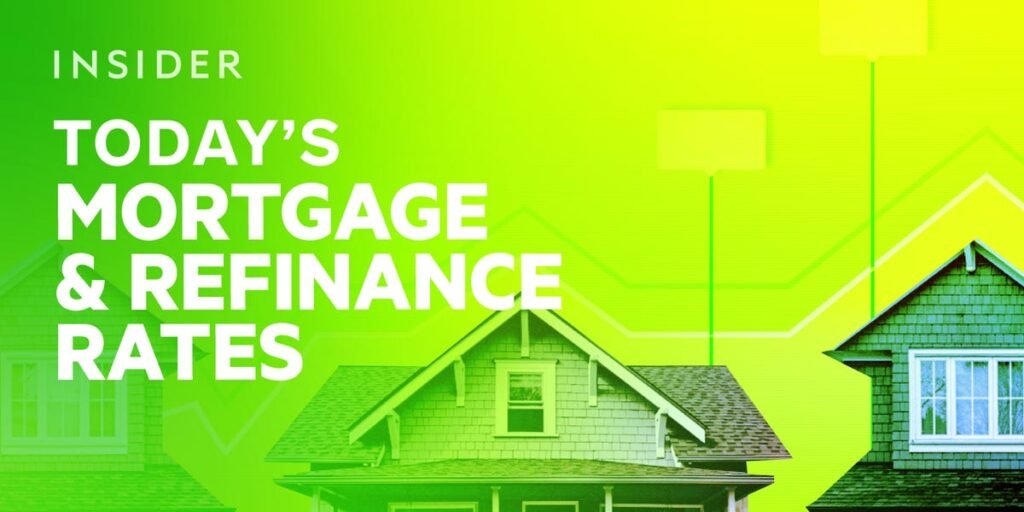Affiliate links for the products on this page are from partners that compensate us (see our advertiser disclosure with our list of partners for more details). However, our opinions are our own. See how we rate mortgages to write unbiased product reviews.
Average 30-year mortgage rates surpassed 7% this week, according to Zillow data. Rates have been ticking up in recent weeks due to hot economic data casting doubts on when the Federal Reserve will finally start lowering the federal funds rate.
Once the Fed starts lowering its benchmark rate, mortgage rates should trend down. But investors don’t expect that to happen until the Fed’s September meeting, according to the CME FedWatch Tool. If inflation remains elevated, we may need to wait even longer for rates to go down.
If you’re planning to buy a house soon, you can alleviate some of the impact of high rates with a great credit score. According to myFICO, borrowers with a score of 700 or higher could still get a rate in the 6% range, while those with scores in the low 600s may pay over 8% to get a mortgage.
Paying down debt or lowering your credit utilization can improve your credit score and help you find affordability in this high rate environment.
Mortgage Rates Today
| Mortgage type | Average rate today |
|
|
|
|
|
|
|
|
|
|
|
|
|
|
|
|
|
|
|
|
|
Mortgage Refinance Rates Today
| Mortgage type | Average rate today |
|
|
|
|
|
|
|
|
|
|
|
|
|
|
|
|
|
|
|
|
|
Mortgage Calculator
Use our free mortgage calculator to see how today’s interest rates will affect your monthly payments.
Mortgage Calculator
$1,161
Your estimated monthly payment
- Paying a 25% higher down payment would save you $8,916.08 on interest charges
- Lowering the interest rate by 1% would save you $51,562.03
- Paying an additional $500 each month would reduce the loan length by 146 months
By clicking on “More details,” you’ll also see how much you’ll pay over the entire length of your mortgage, including how much goes toward the principal vs. interest.
30-Year Fixed Mortgage Rates
Last week’s average 30-year fixed mortgage rate was 7.10%, according to Freddie Mac. This is a 22-basis-point increase from the previous week.
The 30-year fixed-rate mortgage is the most common type of home loan. With this type of mortgage, you’ll pay back what you borrowed over 30 years, and your interest rate won’t change for the life of the loan.
The lengthy 30-year term allows you to spread out your payments over a long period of time, meaning you can keep your monthly payments lower and more manageable. The trade-off is that you’ll have a higher rate than you would with shorter terms or adjustable rates.
15-Year Fixed Mortgage Rates
Average 15-year mortgage rates inched up to 6.39% last week, according to Freddie Mac data. This is a 23-point increase since the week before.
If you want the predictability that comes with a fixed rate but are looking to spend less on interest over the life of your loan, a 15-year fixed-rate mortgage might be a good fit for you. Because these terms are shorter and have lower rates than 30-year fixed-rate mortgages, you could potentially save tens of thousands of dollars in interest. However, you’ll have a higher monthly payment than you would with a longer term.
How Do Fed Rate Hikes Affect Mortgages?
The Federal Reserve has increased the federal funds rate dramatically to try to slow economic growth and get inflation under control. So far, inflation has slowed significantly, but it’s still a bit above the Fed’s 2% target rate.
Mortgage rates aren’t directly impacted by changes to the federal funds rate, but they often trend up or down ahead of Fed policy moves. This is because mortgage rates change based on investor demand for mortgage-backed securities, and this demand is often impacted by how investors expect Fed hikes to affect the broader economy.
The Fed has indicated that it’s likely done hiking rates and that it could start cutting soon. This would allow mortgage rates to trend down later this year.
When Will Mortgage Rates Go Down?
Mortgage rates increased dramatically over the last two years, but they’re expected to go down at some point this year.
In March 2024, the Consumer Price Index rose 3.5% year-over-year. Inflation has slowed significantly since it peaked last year, but it has to slow further before rates will begin to fall.
For homeowners looking to leverage their home’s value to cover a big purchase — such as a home renovation — a home equity line of credit (HELOC) may be a good option while we wait for mortgage rates to ease. Check out some of our best HELOC lenders to start your search for the right loan for you.
A HELOC is a line of credit that lets you borrow against the equity in your home. It works similarly to a credit card in that you borrow what you need rather than getting the full amount you’re borrowing in a lump sum. It also lets you tap into the money you have in your home without replacing your entire mortgage, like you’d do with a cash-out refinance.
Current HELOC rates are relatively low compared to other loan options, including credit cards and personal loans.

